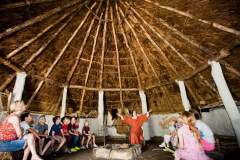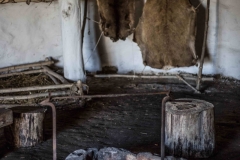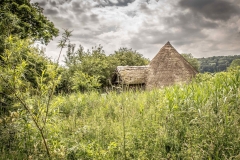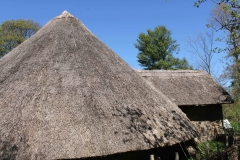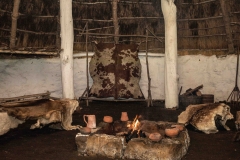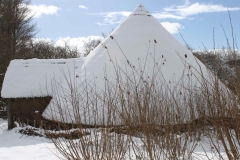Settlers of the Iron Age
The Ryedale landscape has been inhabited for thousands of years. Archaeological finds provide evidence of hunter-gatherers, for example the small flint flakes from arrow heads and blades found in the region.
Gradually, farmers replaced these hunters. Farmers pioneered small settlements intended to be permanent. They domesticated animals, including cattles, sheep and some pigs, and cultivated crops, such as wheat, barley, rye and flax.
These resources have been created to help you explore daily life and farming in the Iron Age, as well as changes from earlier periods.
At Ryedale Folk Museum, you can find out more about Iron Age life by exploring our reconstruction roundhouse. It is based on a typical Iron Age dwelling. These homes left their imprints on the landscape of this region in the form of postholes. From these, we know that roundhouses were constructed in groups so as to house extended families, with several families making a tribe. Living close to other friends and family members must have provided greater security, a sense of community, and access to shared resources.
Farming Life
Try our Virtual Mini-Workshop
It wasn’t easy being a farmer during the Iron Age. There was a lot of work to be done and the community and resources would need protecting from other tribes. Explore Iron Age life and help our Iron Age farmer through this virtual, mini-workshop.
If you’re planning a trip to Ryedale Folk Museum, your students can take part in this virtual workshop before their visit. Alternatively, the workshop could be used as a standalone resource for anyone unable to visit us.
In the workshop video, our Iron Age farmer shares his concerns about threats posed by other tribes. Your students can help him to feel better prepared and keep his home and animals safe.
You can see an example of the Tamworth ‘ginger’ pigs, believed to be the oldest pure-breed pig in the country, farmed since the Iron Age. You’ll also discover how the development of iron had a significant impact on life, including on farming techniques as tools became much stronger, and also impacted the development of weapons.
You could use this workshop as a springboard for creating your own stories to be told orally.
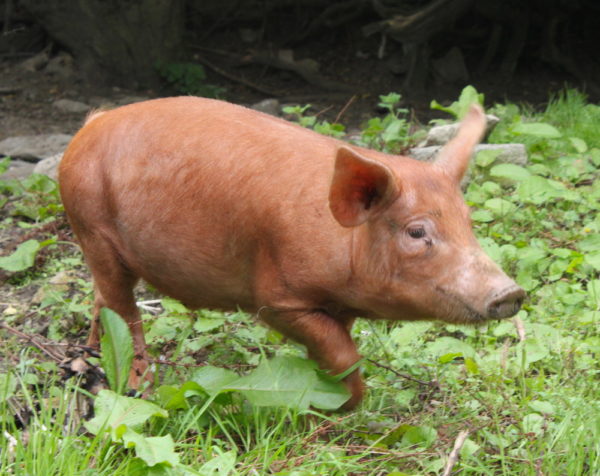
Explore the Roundhouse
If you are planning an educational trip to Ryedale Folk Museum, we would encourage you to talk to your students about what they will see here. This footage will prepare students for where they are coming.
If you are unable to visit, we hope this footage will support you to explore the Iron Age from the comfort of your classroom instead.
Questions to Talk About
As you watch the film footage of our reconstruction roundhouse, or explore the roundhouse as part of a school visit, you may wish to discuss the following questions with your class.
Why is it important that there is a cornfield next to the roundhouse?
Farming was an important development for prehistoric people because it meant that tribes no longer needed to move around to find food. Iron Age farmers grew vegetables and crops. You could talk about the foods that your students would miss if they had to exist on an Iron Age diet. At the entrance to the roundhouse there is a quern stone for grinding the grain for food preparation.
What materials is the roundhouse made from, and why?
Our roundhouse is constructed from a wooden frame, with walls of wattle and daub (a mixture involving mud and twigs) – these are all materials that would have been available to the people at that time.
The Iron Age landscape would have been wetter than today and our roundhouse is surrounded by areas of wetland. This would have provided people with resources including hazel and willow, particularly if they were managed by being cut back to encourage new growth. The rafters of a roundhouse would have been made with stronger, larger woods such as oak or ash. Reeds were needed for the roofing. All these materials required skill to procure.
How many rooms did a family have?
Families lived in a single, circular room together. They lived, cooked and slept there. You could talk about which rooms are missing and how your students would feel about not having those rooms!
Animals were often brought inside, particularly for the night, so the space would have been very full at times. In winter, having the animals inside would have allowed the family to benefit from the animals’ body heat, whilst keeping the animals safe.
Would you like to have a fire in the middle of your room?
A fire would be very important to Iron Age people, as they would use it for light (there are no windows in the roundhouse), heat and to cook food. Meats and fish would be dried and preserved inside the house.
There is no chimney – look at the thatched roof. This is where the smoke would have tried to escape through – although the space would have still be very smoky! You could also talk about fire safety issues from having a fire in the centre of a room.
Would you want to sleep on a bed made of straw?
The family would have all slept together on a bed made of straw arranged the outsides of the room. Animal skins and furs would have been used to increase comfort, but it would still feel very primitive to us!
What can you spot on the loom?
During the Iron Age, cloth was made by hand using an upright loom like ours. Spinning and weaving would have traditionally been considered women’s work. Loom weights hung down attached to the warp threads.
Fabrics were either woollen, from sheep, or linen, from the plant flax. (Cotton was unheard of here until the sixteenth century. We have also developed many synthetic fabrics in modern times.) Other clothing was created using animal skins and furs.
You could talk about the colours that your students can spot on the yarn. All dyes had to be made out of natural materials.
At Ryedale Folk Museum - planning your visit
During an educational visit, you’ll be able to explore our reconstructed roundhouse with your students.
Don’t forget to download and photocopy Spotter Sheets to help your students explore the space.
Whilst you’re here, you can evaluate the site of our roundhouse. Would you build your settlement here?
If you want to tell stories in the roundhouse whilst you’re at Ryedale Folk Museum, don’t forget to prepare some stories in advance. You can use our resources to help.
You can also download a PDF of all the notes on this page.
Booking information
You can book self-led visits to our site by emailing [email protected] or by calling 01751 417367.
The cost of a self-led group visit is £6 per child including VAT, with an accompanying adults visiting for free.
